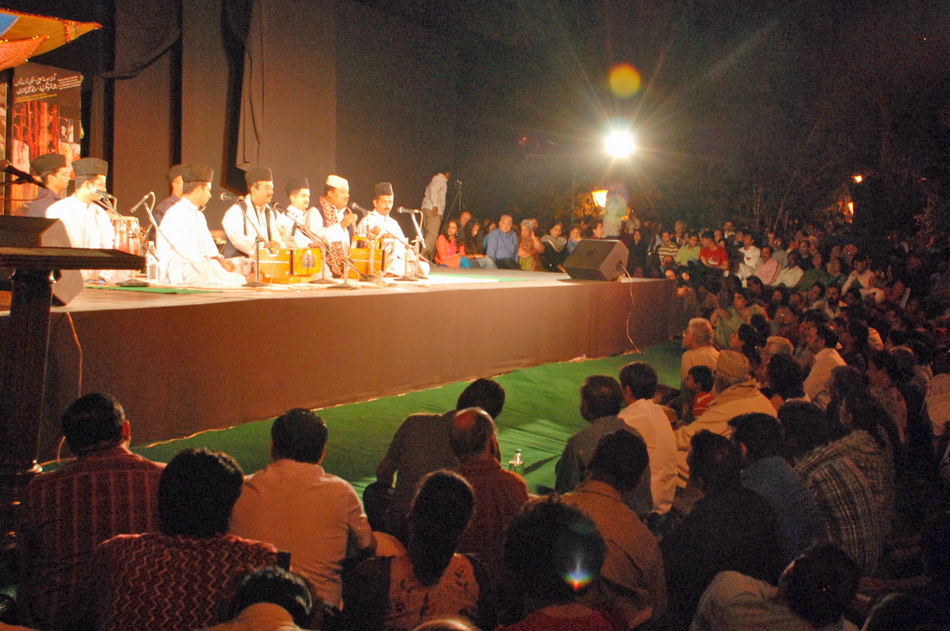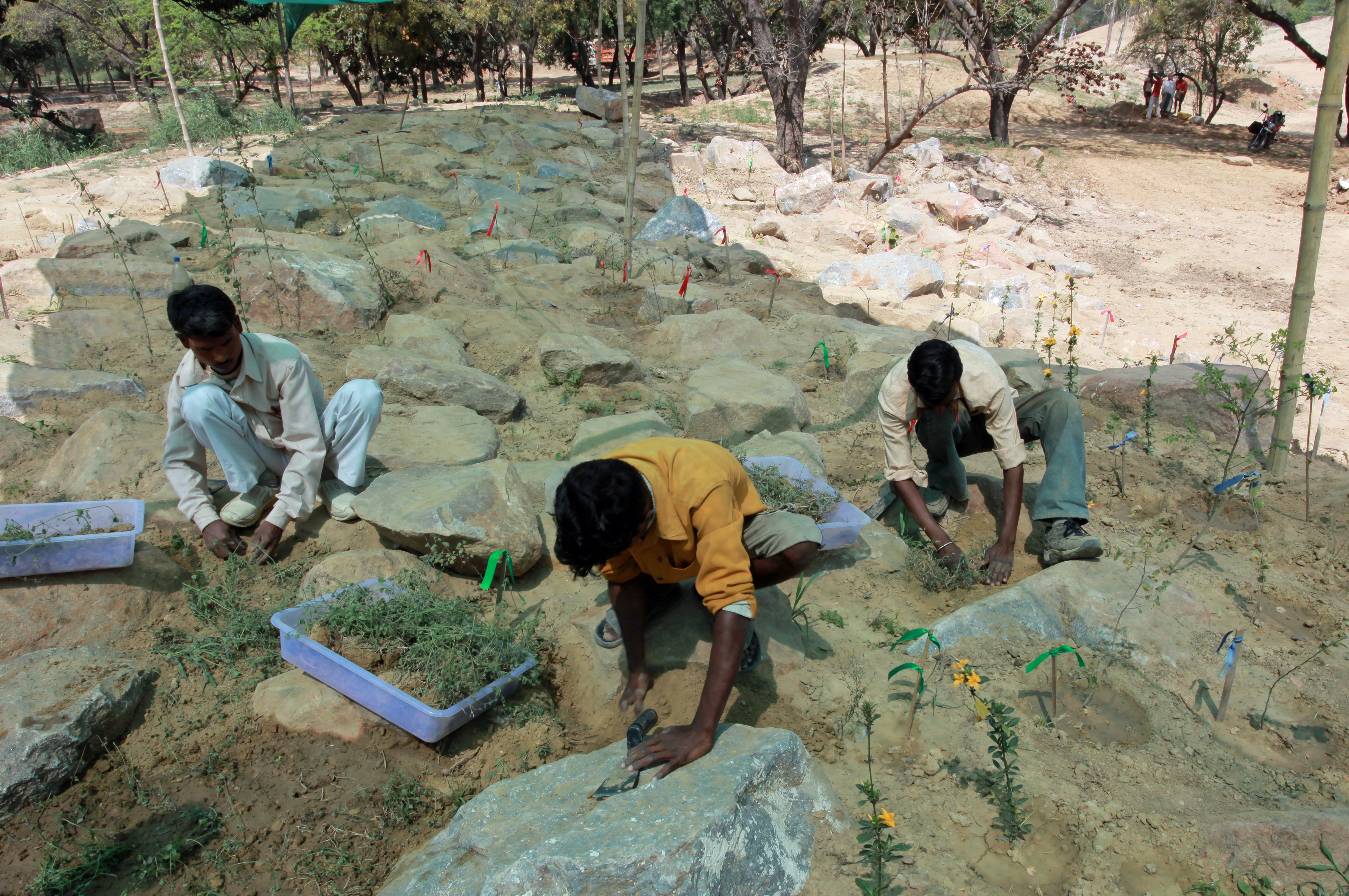 A view of the western facade of Humayun's tomb after the garden restoration was completed. Conservation work on the mausoleum is ongoing. Courtesy of AKTC
A view of the western facade of Humayun's tomb after the garden restoration was completed. Conservation work on the mausoleum is ongoing. Courtesy of AKTCAftab Jalia works with the Aga Khan Trust for Culture in Delhi, and, as Project Architect for the Sunder Nursery, is part of an initiative to revitalise the area surrounding Humayun's Tomb and Gardens and improve the quality of life of the residents in the neighbouring Nizamuddin district. A graduate of the Aga Khan Program for Islamic Architecture at MIT, he shares some insight on the progress of the project and its impact on the surrounding community.
On the occasion of the 50th anniversary of India's independence, Mawlana Hazar Imam gifted the restoration of the gardens of Humayun's Tomb in Delhi – a UNESCO World Heritage Site – to the country. The 450-year-old Mughal monument is the resting place of the Mughal Emperor Humayun, and is popularly known as an artistic precursor to the 17th century monument the Taj Mahal. The success of the restoration – which was undertaken by the Aga Khan Trust for Culture (AKTC) in 2003 – led to a larger “Urban Renewal Initiative” in the neighbouring Nizamuddin District.
 A young girl from Nizamuddin Basti cuts sanjhi patterns. Raising awareness among residents about the rich cultural heritage of the neighbourhood they live in is part of the conservation effort. Courtesy of AKTC
A young girl from Nizamuddin Basti cuts sanjhi patterns. Raising awareness among residents about the rich cultural heritage of the neighbourhood they live in is part of the conservation effort. Courtesy of AKTCInitiated in 2007, the urban renewal aims to revitalise the cultural and built heritage on the site of the Tomb – the historic Hazrat Nizamuddin Basti, (which predates the Tomb by almost two centuries) and the adjacent Sunder Nursery. The project is visionary as it brings together five institutions: Municipal Corporation of Delhi, the Archaeological Survey of India and the Central Public Works Department, the Aga Khan Foundation and AKTC in a public-private partnership. It is notable for combining conservation with environmental and socio-economic development, while working with local communities and stakeholders.
One of the initiative's achievements is the organisation of a handicrafts exhibition by women of Nizamuddin Basti at Delhi's renowned Dastkar Mela in October. Through a self-help group created by AKTC, the women produced exquisite paper products such as book covers, lanterns, lamp shades, greeting cards and wall hangings. In addition to generating a source of income, the group affords the women a creative outlet for expressing their ideas through this traditional Indian craft.
A dense ensemble of medieval Islamic buildings, the Nizamuddin Basti is the resting place of Hazrat Nizamuddin Auliya, one of India's most venerated Sufi saints. As part of the urban renewal initiative, young boys from the Basti received months of instruction about the rich cultural heritage of their neighbourhood and now conduct heritage walks. They have also benefited from English language and computer training programmes.
 In March 2010, AKTC organised “Jashn-e Khusrau”, a festival of qawwali and other Sufi traditions of music and poetry that drew 10 000 people from across Delhi to the Nizamuddin Basti. Courtesy of AKTC
In March 2010, AKTC organised “Jashn-e Khusrau”, a festival of qawwali and other Sufi traditions of music and poetry that drew 10 000 people from across Delhi to the Nizamuddin Basti. Courtesy of AKTCThe initiative has gone even further: organising a festival of Qawwali and other Sufi music traditions that drew 10 000 people from across Delhi to the Basti; redeveloping a local primary school and enhancing its curriculum; and, improving sanitation and hygiene conditions through the construction of public toilet facilities, which are managed by residents who have been trained through the project.
“It is a remarkable initiative,” said Mohammad Hamid Ansari, Vice President of India during a visit to the Basti in February. “I had attended the first meeting when the idea of conserving the Tomb was conceived and I am glad to see the work done here. It is commendable and quite in keeping with AKTC's work across the world.”
On the opposite side of Humayun's Tomb and Garden complex, conservation work on the 70-acre Sunder Nursery is underway, which will see it transformed into a public park. When completed in 2012, the garden will contain over 300 species of plants and trees dotted with monuments. A nine-acre dedicated micro-habitat zone features plants and trees that can be found in the forests of Delhi and surrounding areas. A planned interpretation centre will invite students and nature lovers to further explore aspects of the park that are unique to the-region. Its proximity to Humayun's Tomb is expected to make it a thriving hub of ecological and cultural activity for the citizens of Delhi and tourists alike.
Indeed, the rush of visitors has already begun. In November the President and First Lady of the United States, Barack and Michelle Obama, toured the Mughal monument for 45 minutes and were visibly impressed.
“Through the rise and fall of empires, Indian civilisation has endured and led the world to new heights of achievement,” wrote the President in the visitor's book. “The world owes a profound debt to India and its people.”









